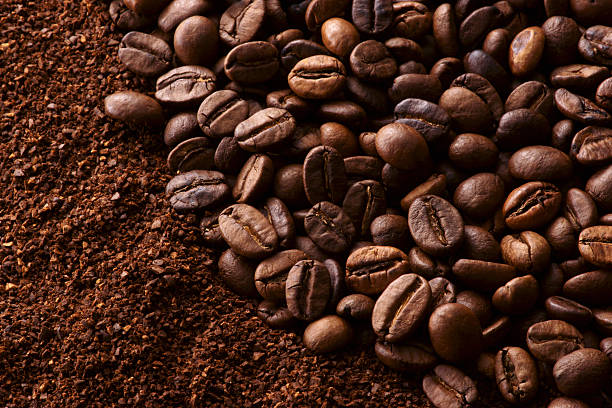
In short, coffee beans are roasted so that they become coffee as we know it. In absence of roasting, they're just an unroasted bean. While the bean may have all the distinct characteristics that we associate with coffee, it isn't able to have the aroma until it has been roasted.
Coffee beans before the roast
Coffee beans aren't actually beans. They are actually the seeds of a red or purple fruit that resembles the one of a cherry, which is one specific coffee species. Coffee beans are only referred to as beans because of their appearance and similarity to a traditional bean. The coffee bean in its raw form is green in colour and appears fresh.
There are two main varieties of coffee beans: Arabica and Robusta. Do you know the difference? Typically, (although not always!) Arabica coffee beans are of higher quality, have less caffeine and are more aromatic with more flavors than Robusta coffee bean.
Coffee beans are roasting
From the young green bean to the glossy brown bean we're all familiar with, เมล็ดกาแฟ go through the process of transformation when roasting, altering both the chemical and physical components of the coffee bean.
To get the most flavor from coffee beans, they're roasted. Roasting coffee is a complicated procedure that can be adapted to the tastes of the roaster. Roasters are able to adjust the temperature and duration of their roasts to meet various tastes.
The art of roasting coffee beans
The art of roasting coffee beans is an art that is subjective, to an extent. There are varying methods however, all are judged based on the taste that comes from the coffee bean itself. A lot of the methodology for roasting coffee beans is based on the amount of time you heat (roast) the beans for, dictating the overall color and taste.
While state-of-the-art roasting equipment and facilities could give you an advantage, it's the understanding of coffee that makes it an art form. It is possible to get various results based upon what you want. Thus, it's crucial to make use of your senses and your experience.
Coffee roasters typically have the most effective methods for knowing the source of coffee beans, roasting them and being aware of their characteristics during roasting.
The Science of roasting coffee beans
The research behind roasting coffee beans is more than just the person's knowledge and the use of modern technology. This science must take place, to allow coffee to become coffee.
Roasted coffee can be divided into two types which are volatile and non-volatile. The aroma is mainly due to the volatile elements and the flavors associated with coffee are often affected by the level of caffeine.
The process of roasting involves variety of exothermic and endothermic reactions. The endothermic phase occurs where energy is absorbed into heat. It's here that coffee beans lose their moisture and also change in colour.
The exothermic stage sees energy being released in form of heat (in this case, steam). When the moisture in the coffee beans has evaporated, it escapes the bean by rupturing it, causing it to pop or crack. The coffee bean has started to discover its unique flavours and aromas, as well as inheriting the deep brown color we all recognise.
Coffee Roasted
The process of roasting is what creates coffee. So, in answer to the question 'why are coffee beans roasted?' it's quite simple. In the article above, the เมล็ดกาแฟ needs to go through numerous roasting procedures to be the coffee that we know and love otherwise, it's pretty ineffective.
In addition The answer to this question may have related to an individual's love affair with the science and art behind the process. The answer could also be found by stating that coffee market is on the rise, therefore the beans of coffee must be roasted to meet the growing demand.
Either way, we're just grateful that someone from the 15th century made the decision to drop a few into a pan above some flames and then experiment.
No comments:
Post a Comment